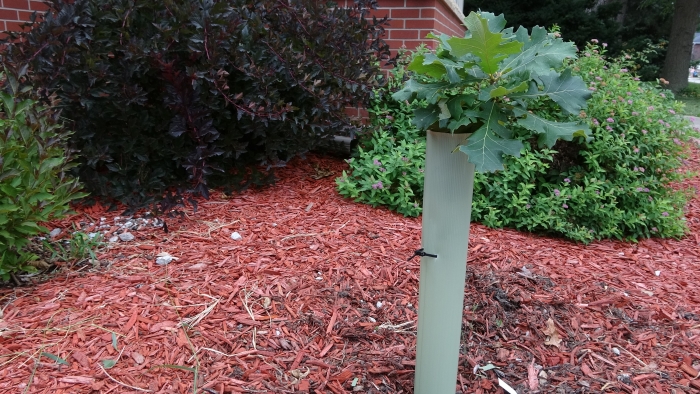By Pamela Doan
What if every homeowner in the Highlands planted a tree this spring? There are 3,580 households in Philipstown and Beacon has 5,347. That would be nearly 9,000 trees.
Trees do this amazing thing: They hold CO2, which keeps it from being released into the atmosphere where it contributes to climate change. Polar vortex, anyone? According to the carbon calculator at treebenefit.com, a formula based on protocols developed by the USDA Forest Service, a sugar maple that’s 12 inches in diameter lowers CO2 levels by 350 pounds per year. For context, driving a car and using one gallon of gas releases 20 pounds of CO2. (Check out coolclimate.org to calculate your personal carbon footprint.)
If reducing your carbon emissions isn’t enough of an incentive, consider that trees clean the air and water, absorb storm water, cool us with shade, and are home and food sources for birds, insects and wildlife. Feeling stressed? Research shows that even a short nature walk helps.

Spring’s mild temperatures and steady rainfall are ideal for seedling trees. The Soil and Water Conservation Districts in Putnam, and Dutchess counties recently announced their annual seedling sales and the Arbor Day Foundation has a diverse selection. It’s an affordable way to make an impact. For instance, get 10 blueberry or raspberry bushes for $35, day lilies for $2 a bulb, or 10 flowering dogwood trees for $15.
If that’s too many seedlings for your landscape, share with friends and neighbors or give them as gifts. As a bonus, every order at the Putnam sale includes a pack of common milkweed seeds to support the endangered monarch butterfly.
The biggest advantage of planting a seedling is that it’s easy. Digging a hole in our rocky, heavy-clay Hudson Valley soil takes some effort, but the smaller the hole, the easier the task. Seedling trees are typically bare root and look like long twigs; they aren’t encased in a container with soil. Planting while they’re dormant lets the tree wake up and begin establishing roots right away. Simply spade in a seedling, making sure the roots spread out.
The challenge will be protecting it from wildlife. Deer, mice and voles love tender, young trees, and deer are one of the main culprits behind the lack of forest regeneration in New York. The large populations browse baby trees before they have a chance. But “if you can get a seedling established in the first year, it’s got a good chance of survival,” says Peter Smith, the urban forestry program manager for the Arbor Day Foundation.

Tree shelters can help. These are tubes of translucent material that allow sunlight, air and water in, while surrounding the growing tree. They come from 1 to 5 feet tall and create a greenhouse effect, storing moisture and heat. The tubes can be left on until the trunk fills it. Some are designed to split apart as the trunk gets wider, but the best thing to do is remove it. The tube protects the seedling until it’s big enough that if a deer nibbles on it, it can still survive.
For larger planting areas, a fence that’s at least 6 feet high is probably more economical. The tubes run from $4 to $8 each, and they are easy to assemble.
Some trees can develop weaker trunks from growing in tubes because movement in the wind makes a trunk grow thicker. Smith said these same trees will get taller faster, though. Look for a tube with vents that allow air to circulate.
Prevent birds from getting stuck in the tubes by covering the top with plastic mesh. Stake the tube firmly to the ground (but not in the ground) to prevent mice from nesting. Keep the area around the seedling clear of weeds. Smith recommends covering the ground in a 1- or 2-foot-wide circle around the tree with a layer of newspaper weighed down by mulch.
So, Philipstown and Beacon, let’s start planting some trees.
Pamela Doan, a garden coach with One Nature, has grown ferns in Seattle, corn on a Brooklyn rooftop and is now trying to cultivate shitake mushrooms on logs. Email her at [email protected].

What an informative and encouraging article to spur us all into action this spring. Planting trees does have so many advantages and can clearly benefit us in helping to clean the air we breath. We unfortunately live in an area that receives low air-quality ratings that we need to counter this by MASSIVE tree planting.
When choosing your spots try and remember to avoid planting near septic fields and power lines so that trees remain a positive influence in our lives and hopefully we make this a yearly ritual going forward. Would be great to see this reprinted at beginning of spring season.